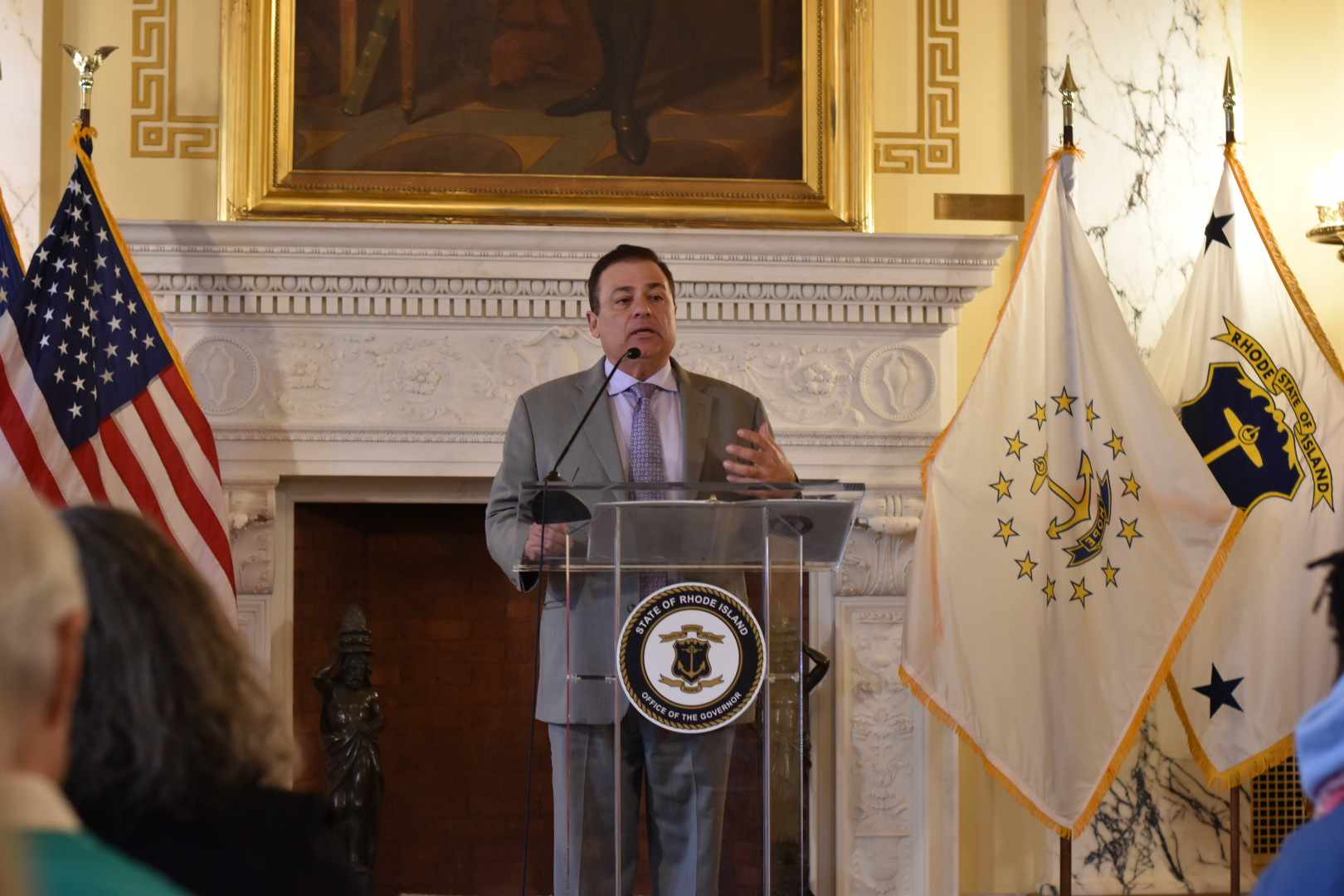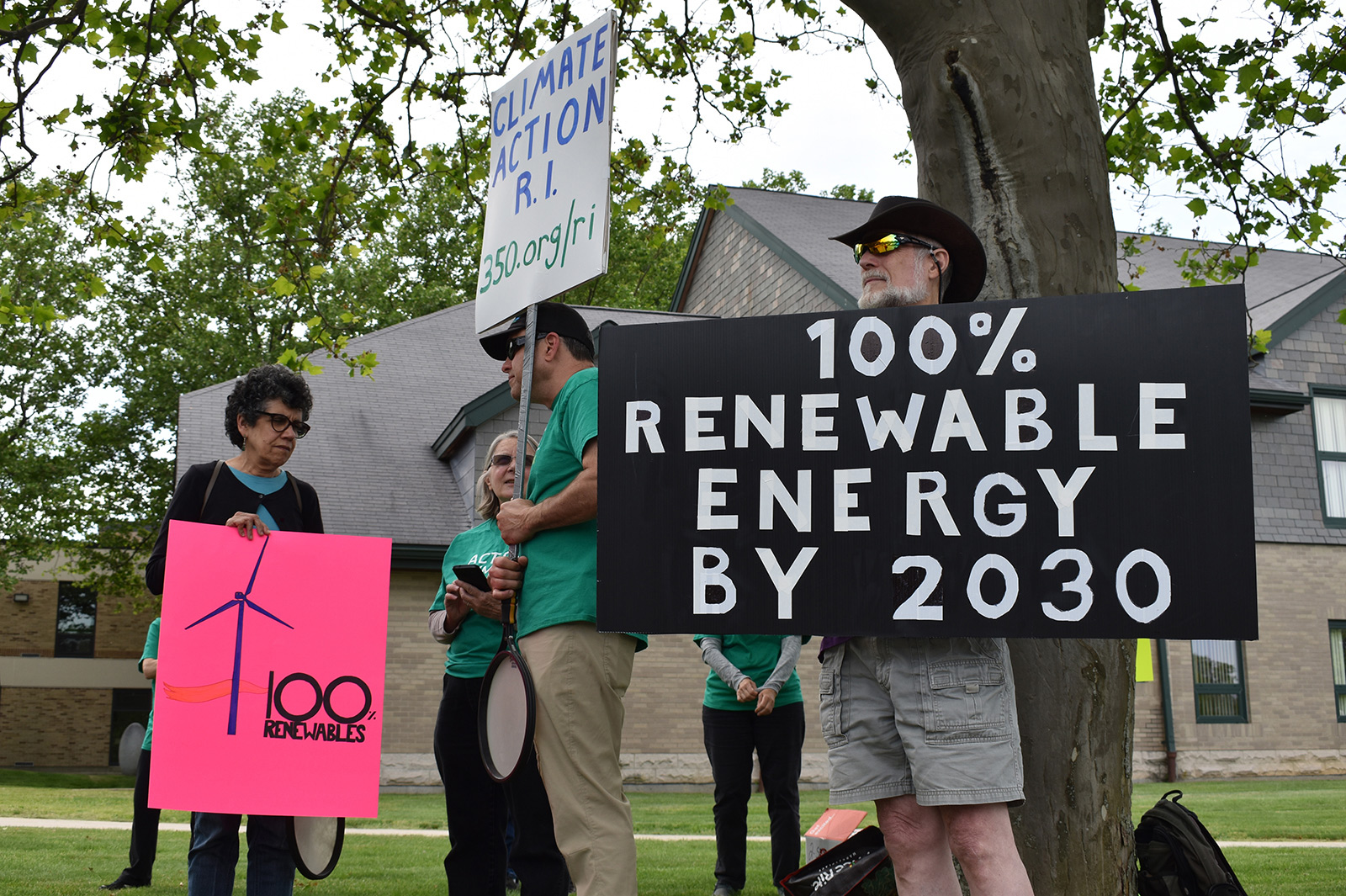General Assembly Approves Renewables Program
June 18, 2014
PROVIDENCE — Four years ago it was a pilot program, but on June 17 the General Assembly voted to extend the distributed generation (DG) program and unofficially launch the next phase of the principal method for expanding renewable energy in Rhode Island.
“The pilot program of four years has proven successful,” said Kenneth Payne, an architect of the DG program and chairman of the committee that oversees its development.
How it works. The program allows renewable-energy developers to sell electricity from a project to National Grid at a fixed price for 15 years. A fixed price creates a predictable cash flow, and an expected cash flow helps developers acquire funds to build a project.
The pilot program, started in 2011, set aside a total of 40 megawatts of electricity across four years for new solar and wind projects. Each approved project received a portion of this electricity. For example, a wind turbine in North Kingstown received 1.5 of the 40 megawatts. National Grid pays the developer 13.35 cents per kilowatt-hour of electricity generated by the turbine.
To manage the pricing, developers bid on the contracts. This has reduced contract prices and subsequently cut the expense to ratepayers. During the pilot program, large solar contracts have dropped from 23.36 to 16.45 cents per kilowatt-hour. The current rate for standard electricity is about 8 cents per kilowatt-hour.
Beginning in 2015, the program will set aside 160 megawatts across five years. The purchase agreements run for 15 or 20 years. A new provision in the program allows homeowners to apply for fixed-price contracts. The pricing lets homeowners receive payments for generating excess electricity. Currently, homeowners use net metering, which credits electricity generated from a renewable project to offset costs on future bills.
The DG program is also open to anaerobic digesters and small hydroenergy projects.
Proponents of the program claim the program creates jobs, expands the state’s nascent renewable-energy sector, diversifies the state’s energy production and reduces greenhouse gas emissions.
Critics argue that the program raises electric utility rates and subsidizes jobs at a high cost.
A recent report commissioned by the Office of Energy Resource and the General Assembly suggested that the enhanced DG program creates $30.7 million in economic benefits annually and will add 225 new jobs across 25 years. The cost to ratepayers is on average 70 cents a month.
The four-fold increase in the capacity of the program is expected to draw significant interest from renewable-energy developers. Payne said he plans to offer added public outreach to meet demand.
The pilot DG program awarded 30 contracts to mostly large wind and solar projects in 15 cities and towns. Some of the projects include:
Wind
1.5-megawatt turbine at North Kingstown Green, North Kingstown.
1.5-megawatt turbine on town property in Coventry.
Solar
3.7-megawatt solar array at Forbes Street Landfill, East Providence.
2.3-megawatt solar array at the Quonset Business Park.
2-megawatt solar array at Bog John Leyden’s Christmas Tree Farm, West Greenwich.
52-kilowatt solar array at Newport Vineyards, Middletown.
498-kilowatt solar array at Cox Communications, Portsmouth.
181-kilowatt solar array at Cox Communications, West Warwick.
Categories
Join the Discussion
View CommentsYour support keeps our reporters on the environmental beat.
Reader support is at the core of our nonprofit news model. Together, we can keep the environment in the headlines.
We use cookies to improve your experience and deliver personalized content. View Cookie Settings



